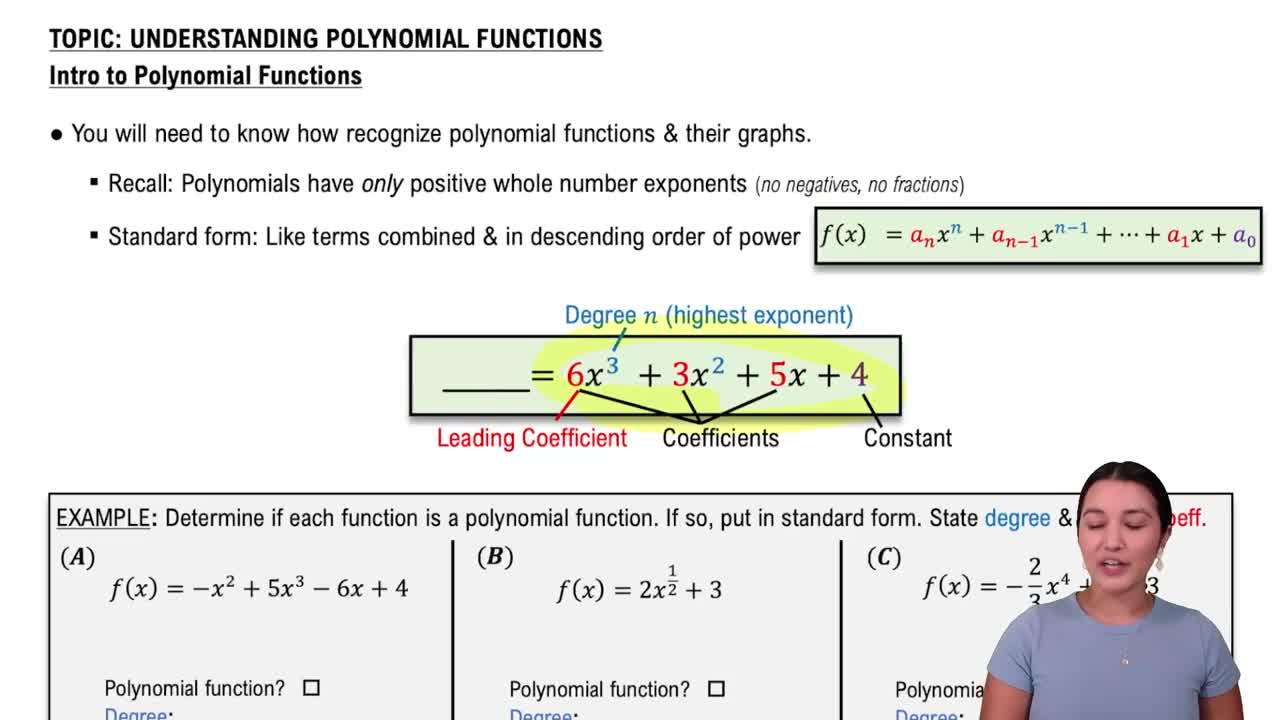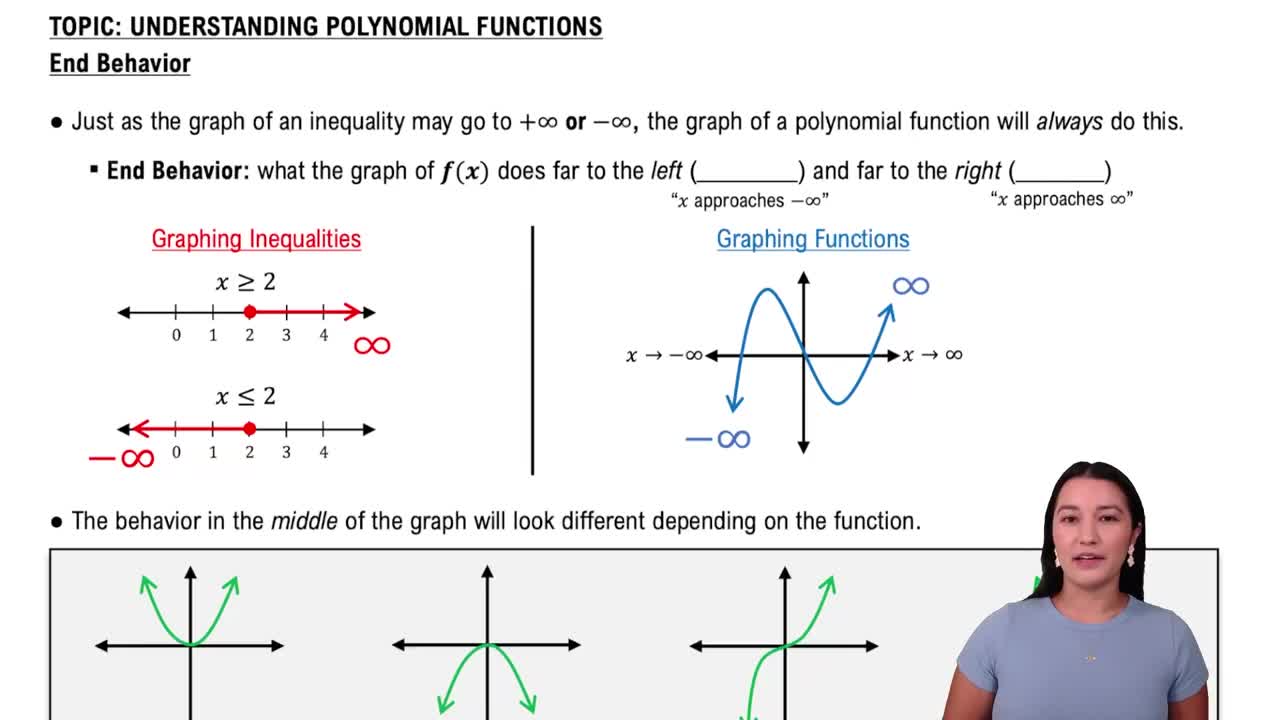Table of contents
- 0. Review of Algebra4h 16m
- 1. Equations & Inequalities3h 18m
- 2. Graphs of Equations43m
- 3. Functions2h 17m
- 4. Polynomial Functions1h 44m
- 5. Rational Functions1h 23m
- 6. Exponential & Logarithmic Functions2h 28m
- 7. Systems of Equations & Matrices4h 6m
- 8. Conic Sections2h 23m
- 9. Sequences, Series, & Induction1h 19m
- 10. Combinatorics & Probability1h 45m
4. Polynomial Functions
Understanding Polynomial Functions
Problem 40b
Textbook Question
Graph each polynomial function. Factor first if the polynomial is not in factored form. See Examples 3 and 4. ƒ(x)=-3x^4-5x^3+2x^2
 Verified step by step guidance
Verified step by step guidance1
Identify the polynomial function: \( f(x) = -3x^4 - 5x^3 + 2x^2 \).
Check if the polynomial is in factored form. Since it is not, proceed to factor it.
Factor out the greatest common factor (GCF) from the polynomial. Here, the GCF is \( x^2 \), so factor it out: \( f(x) = x^2(-3x^2 - 5x + 2) \).
Attempt to factor the quadratic expression \(-3x^2 - 5x + 2\) further, if possible. Look for two numbers that multiply to \(-3 \times 2 = -6\) and add to \(-5\).
Once factored completely, use the factored form to determine the roots of the polynomial, which are the x-intercepts of the graph. Plot these intercepts and analyze the end behavior based on the leading term \(-3x^4\) to sketch the graph.
Recommended similar problem, with video answer:
 Verified Solution
Verified SolutionThis video solution was recommended by our tutors as helpful for the problem above
Video duration:
8mPlay a video:
Was this helpful?
Key Concepts
Here are the essential concepts you must grasp in order to answer the question correctly.
Polynomial Functions
A polynomial function is a mathematical expression involving a sum of powers in one or more variables multiplied by coefficients. The general form of a polynomial in one variable is f(x) = a_n*x^n + a_(n-1)*x^(n-1) + ... + a_1*x + a_0, where 'n' is a non-negative integer and 'a_n' are constants. Understanding the degree and leading coefficient of the polynomial is crucial for graphing and analyzing its behavior.
Recommended video:

Introduction to Polynomial Functions
Factoring Polynomials
Factoring polynomials involves rewriting the polynomial as a product of simpler polynomials or factors. This process can simplify the function and make it easier to find its roots, which are the x-values where the function equals zero. Common methods of factoring include taking out the greatest common factor, using the difference of squares, and applying the quadratic formula for second-degree polynomials.
Recommended video:
Guided course

Introduction to Factoring Polynomials
Graphing Techniques
Graphing polynomial functions requires understanding their key features, such as intercepts, end behavior, and turning points. The x-intercepts can be found by setting the polynomial equal to zero and solving for x, while the y-intercept is found by evaluating the function at x=0. Analyzing the degree of the polynomial helps predict the number of turning points and the overall shape of the graph.
Recommended video:
Guided course

Graphs and Coordinates - Example

 6:04m
6:04mWatch next
Master Introduction to Polynomial Functions with a bite sized video explanation from Callie
Start learningRelated Videos
Related Practice


















